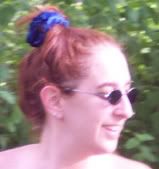(The following piece originally appeared in Antioch Is My Home: Community Art Project, inspired by the planned closing of Antioch College by Antioch University. Since the writing of this piece, after a prolonged and unprecedented battle, College alumni have been awarded control of the school. To learn more about Antioch College and its struggle for continuity and independence, please visit the College website or the alumni association website.)
Pasha and I sat alone on Pennell House porch. In the turning tide from quarter to trimester, new curriculum to new-new curriculum, we alone had washed ashore. Even Jeff was becalmed in his gallery on Dayton-Yellow Springs Road, and soon I would drift off to work at the Yellow Springs Public Library. Behind us, Birch Hall hung in suspended animation, doors locked and chained.
Pasha tapped his bowl against the railing and laughed. “Listen,” he said. “It’s so quiet you can hear a bowl ash across campus.” He tapped again and the metallic ring echoed back.
I walked to the east side of Pasha’s home, the former home of America’s first fully-tenured female professor, to watch the red brick of my former home light up in the afternoon sun. Eight semesters total I had lived in that concrete block—one in Pennell, one in Willett, six in Hardy—and, still more community member than alum, felt a terrible distance from the chained dormitory. I wanted to walk its halls, crunch broken glass under my feet, lie on a stained mattress in the fortress where I first felt safe among a community. Twenty feet away, I was homesick for Birch.
“It’s the Phoenix,” I promised myself. Birch would rise again, burn, and be reborn in perpetuity. Birch was eternal, indestructible.
The thefts of the future remained hidden that day: the car accident that would steal from Pasha the memory of a campus so silent you could hear the echo of an ashing bowl; the cabal that would steal from everyone who loved Antioch the security of a home to shelter kids like us in perpetuity.
Even in May, I could trace the green path where the steam tunnels melted the snow each winter. I knew how to set the showerheads for the community steams that would be impossible following the remodel, where to cut the bolt to access the roof, and why you must never, ever flush a tampon in Birch Space. I had cooked four years of meals in filthy kitchenettes, collected a pile of 11-D-2s, and cut Birch First! graffiti into the sidewalk in front of me. I had come to Yellow Springs without a sense of place; Antioch provided the roots that let me spread my branches far from home.
We did not know, that strange, silent May, what circumstance would steal, and what we would keep. We couldn’t anticipate the home, years later, nearly two thousand miles from Yellow Springs, where Pasha, Jeff, and I would keep our own Antioch traditions alive, where I would hold for Pasha the memories he had lost. We couldn’t anticipate the phone call, years later, when Jeff’s mother, who once worked in the Office of Development, and later as Al Guskin’s administrative assistant, would announce that the University was closing the College. We didn’t know what to do with that information, six months before the public announcement. Online, older alums told me to shut up about it, not to be such an innocent. Naysayers had predicted the college’s demise for years, they said. Nothing was wrong, they said.
Jeff’s mother insisted that the plan hadn’t been such a secret, that actions taken in the years prior to that still May afternoon had set it into motion. She said Guskin’s chancellorship had been one step in the preparation. She said theft of College resources by the University had been commonplace in the 90s. A conservative, not given to conspiracy theory or outrage, she merely reported what she had seen and heard.
Pasha’s parents had a wooden plaque made up for our home, which reads, “Antioch West” with our names—Jeff, Monica, Pasha—below. We wouldn’t be a little family now if we hadn’t been a big family then, if we all hadn’t been spiritually homeless, drawn to the place where we, as individuals, were included.
It was a microscopic moment, framed by the echo of metal on metal and the glint of sun on brick, in which I prepared to trade the shelter of Yellow Springs for the big, scary world, clutching the knowledge that I had found home. Antioch is a center I carry within me, a home to share with future generations who need it as much as I did. There are children today—teenagers, elementary students, preschoolers—who don’t even know of the forces working to steal their birthright. Antioch College is my home, a home to which I welcome all who seek shelter, and a shelter I weave around myself every day.
Monday, December 21, 2009
May, 1997
Subscribe to:
Comments (Atom)


